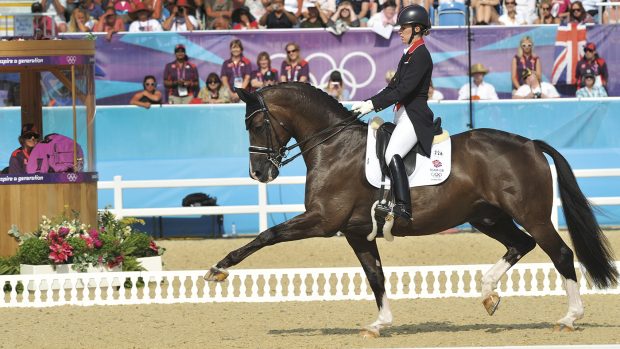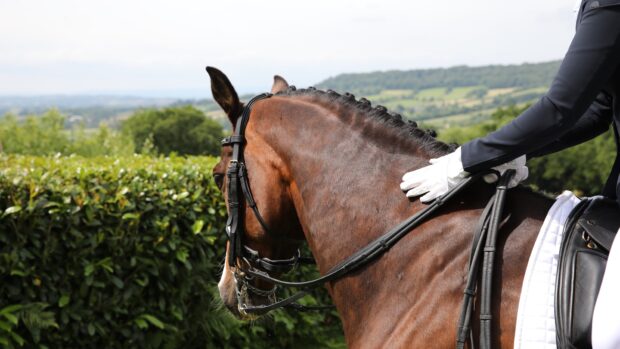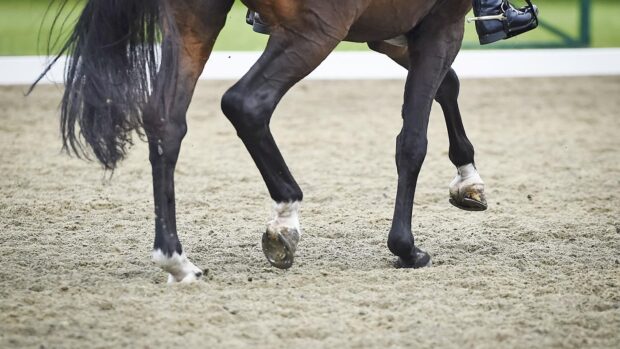The 2024 British Dressage (BD) members’ handbook was released last Friday (1 December) and brought with it the much anticipated new dressage tests – as well as some key rule changes.
We’ve broken down all the changers riders need to know below:
New dressage tests
Where substantive changes have been made we’ve classified the test as a new test, even if some movements may also appear in older tests.
Likewise, a lot of the tests have been reworded – we haven’t listed every change of language but we have where it has made a difference to how the test is ridden.
Intro 1 is the same as intro A but the coefficient on the collective mark for paces has been removed.
Intro 2 is the same as intro B with the same change in the collective mark for paces.
Intro 3 is the same as intro C with the same change in the collective mark for paces.
Intro 4 is a new test.
Prelim 1 is the same floorplan as the old prelim 2 but the collective marks have changed. It was 10×2 for rhythm, 10×2 suppleness, 10×2 contact, 10×2 rider’s position and 10×2 rider’s results. It is now 10×1 paces, 10×1 impulsion, 10×2 co-operation and 10×2 rider’s position and seat.
Prelim 2 is the same as the old prelim 12 but with the same changes to the collective marks.
Prelim 3 is a new test.
Prelim 4 is the same as the old prelim 15 but with the same changes to the collective marks.
Prelim 5 is the old prelim 19 but with the same changes to the collective marks.
Prelim 6 is the old prelim 17A but with the same changes to the collective marks.
Novice 1 is largely the same as the old novice 28 but with some notable changes.
For movement six, where it used to read working canter half circle right 15 metres diameter, returning to the track between E & K, it now reads returning to the track at K. Movement 11 has changed in the same way.
Movement 15, the free walk on a long rein, now carries a coefficient.
The new test also has a give and retake of the reins in trot.
The collective marks have also changed. The coefficient on paces and impulsion has been removed. Submission has been reworded to cooperation, but carries the same description and is scored the same. The mark for the rider’s position and seat remains the same.
Novice 2 is the same as the old novice 27 except in movement 13 where the give and retake the reins between F & M in working canter has been replaced with medium canter. It also has the same changes to the collective marks as novice 1.
Novice 3 is a new 20 x 40 test.
Novice 4 is the same as the old novice 23, with the collective marks remaining unchanged but with submission still reworded to co-operation.
Novice 5 is the same as the old novice 38 but movement 20 – HIB change the rein in free walk on a long rein – now carries a coefficient. It also has the same changes to the collective marks as novice 1 and 2.
Novice 6 is very similar to the old novice 37A. The movements have been resequenced with the two medium trots now coming before the free walk on the long rein, and the canter circles have been reduced to 15-metre circles. It also has the same changes to the collective marks.
Elementaries 1, 2 and 3 are new 20 x 40 tests.
Elementary 4 is the same as the old elementary 53 but with movement two changing from SP change the rein in medium trot, to SF change the rein in medium trot. Movement 5 has also gone from two to five steps of medium walk to three to five steps of medium walk.
Elementaries 5 and 6 are new tests that include shoulder-in.
Mediums 1 and 2 are new 20 x 40 tests.
Medium 3 is the same as the old medium 61 but with a half walk pirouette added to movement 13. It also has the same changes to the collective marks as the novice tests.
Medium 4 is the same as the old medium 73 with the collective marks again changing.
Medium 5 is similar to the old medium 76 with some changes.
Where movements five to eight used to be: HCM collected trot, MX half pass right, L half 10m circle, PI half-pass left, C track right, MXK extended trot, it is now: C turn down the centre line, GE half-pass right, A turn down the centre line, DE half-pass left, MXK extended trot.
In movement nine the change of rein in medium walk has also been removed, with the subsequent canter work picking up from M rather than A.
Medium 6 is the same as the old medium 75 with just the collective marks changing.
Advanced medium 1 is the same as the old advanced medium 90 but with the collected walk in movement 12 removed. Collective marks remain the same as the old test but the wording on submission has again been changed to cooperation.
Advanced medium 3 is the same as the old advanced medium 92.
Advanced medium 4 is the same as the old advanced medium 96.
Advanced medium 5 is similar to the old advanced medium 91 but with 8-metre circles added before the half-passes in movements 4 and 9.
A coefficient has also been added to the extended walk and removed from the collective mark for paces and impulsion.
Advanced medium 6 is the same as the old advanced medium 98 with the collective marks for paces and impulsion again being reduced.
There is no advanced medium 2. “When analysing the data on test usage, it was clear that short-arena advanced medium tests were not a popular choice for members,” a BD representative said.
“To maintain a consistent structure to the new test system at all levels, the 20 x 40 test is number one, with the Area Festival and regional tests referred to as five and six. There is still scope to introduce another 20 x 60 advanced medium test, if this is required in the future.”
Although a lot of the tests have not changed much, there has been a significant reduction in the collective marks, which BD hopes will level the playing field by rewarding good riding rather than just good horses.
The shift in terminology from “submission” to “cooperation” also feels significant in light of how BD is trying to put a greater focus on horse welfare.
The new tests will come into use from 1 July 2024 and will be free to download for members until 31 May 2024.
Other rule changes
The rules on prelim silver eligibility have changed to be more inclusive. Riders who have won more than 25 points at elementary or have competed at the levels above will now be eligible for prelim silver.
From 1 January 2024, riders will also need to gain two scores of 62% or above at advanced to qualify for prix st georges (PSG) or inter 1, rather than one.
Scores from 2023 can be carried over to 2024 as long as both were achieved 12 months before competing at PSG or inter 1. This is another change that has been introduced on welfare grounds and is designed to discourage riders from rushing horses into the higher levels.
Similarly, if a combination drops below 54% twice in six months at small, middle and big tour levels, they will need to re-qualify at the relevant level below.
There is also now a maximum number of tests a horse is allowed to perform in a day. At intro, prelim and novice it is four tests per day. At elementary, medium and advanced medium it is three. Advanced, PSG and inter I horses may only compete in two tests and that level per day. Inter II and grand prix horses may only compete once a day.
You might also be interested in:

‘Breaking down barriers’ as dark breeches to be allowed in competition

‘Exciting changes ahead’: British Dressage announces new tests for 2024

Subscribe to Horse & Hound magazine today – and enjoy unlimited website access all year round
Horse & Hound magazine, out every Thursday, is packed with all the latest news and reports, as well as interviews, specials, nostalgia, vet and training advice. Find how you can enjoy the magazine delivered to your door every week, plus options to upgrade your subscription to access our online service that brings you breaking news and reports as well as other benefits.






